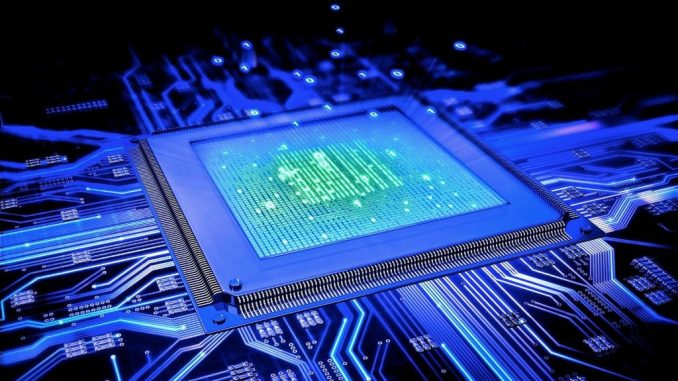
In the relentless march of technological progress, silicon chips have long been the undisputed bedrock of our digital world. From the smartphones in our pockets to the vast data centers powering the internet, these tiny electronic marvels have consistently delivered exponential increases in processing power, largely thanks to Moore’s Law, which famously predicted the doubling of transistors on a chip approximately every two years. However, as the physical limitations of silicon become increasingly apparent – confronting challenges like heat dissipation, energy consumption, and the fundamental laws of physics at nanoscale – a new frontier in computing is emerging: optical computing. This innovative approach, which harnesses the power of light rather than electricity, holds the tantalizing promise of revolutionizing how we process information, potentially replacing silicon as the primary engine of computation.
At its core, the difference between silicon chips and optical computers lies in their fundamental medium for carrying information. Traditional silicon chips rely on the flow of electrons through intricate circuits. These electrons, while effective, generate heat due to electrical resistance, which becomes a significant hurdle as transistors shrink and pack more densely. This heat not only consumes considerable energy but also limits the speed at which chips can operate without overheating and risking damage. Optical computing, on the other hand, proposes to use photons—particles of light—to transmit and process data. Photons travel at the speed of light, inherently faster than electrons, and unlike electrons, they do not generate heat when moving through optical components. This fundamental shift from electronics to photonics offers a compelling array of advantages that could redefine the boundaries of computational power.
The most significant advantage of optical computing is, perhaps, its unparalleled speed. Since information is encoded and transmitted using light, which moves far more rapidly than electrons within a conductor, optical processors could theoretically achieve speeds orders of magnitude greater than even the most advanced silicon chips. This rapid data transfer and processing capability is particularly critical in areas demanding immense computational throughput, such as artificial intelligence, machine learning, and big data analytics. Imagine, for instance, a neural network performing complex calculations for real-time autonomous driving or instant medical diagnostics; the speed offered by optical computing could enable such applications to operate with unprecedented efficiency and responsiveness.
Beyond speed, energy efficiency stands out as another compelling benefit. The resistance that electrons encounter in silicon circuits leads to substantial energy loss in the form of heat, necessitating elaborate and energy-intensive cooling systems in high-performance computing environments. Photonic systems, by their very nature, dissipate minimal heat because photons do not encounter the same resistive forces. This translates to significantly lower power consumption, which is not only environmentally beneficial but also economically advantageous, especially for large-scale data centers that consume enormous amounts of electricity. Reducing cooling requirements alone could lead to substantial operational cost savings for businesses heavily reliant on computing infrastructure.
Furthermore, optical computing offers the potential for massive parallelism. Unlike electrons, which can interfere with each other when traveling in close proximity, photons can cross paths without significant interference. This unique property of light means that multiple streams of data can be processed simultaneously within the same optical circuit, drastically increasing computational throughput. This inherent parallelism is a game-changer for workloads that benefit from concurrent processing, such as matrix multiplications frequently used in AI algorithms or complex simulations in scientific research. It’s akin to having many distinct computational pathways operating at once, rather than relying on a more sequential processing approach, even if highly optimized.
However, the transition from silicon to light is not without its formidable challenges. While the theoretical advantages are clear, practical implementation presents numerous hurdles. One major obstacle is the development of reliable and scalable optical memory. While light excels at transmission and processing, storing data optically with the density and non-volatility of electronic memory remains a significant area of research. Current optical memory solutions often have short retention times and struggle with integration density, making it difficult to match the storage capabilities of conventional RAM. Another challenge lies in the precise control and manipulation of light at the nanoscale. Fabricating optical components, such as waveguides, modulators, and photodetectors, with the precision required for complex computation on a chip is an intricate and often costly endeavor compared to established silicon manufacturing processes. Integrating these nascent optical components seamlessly with existing electronic infrastructure also poses compatibility challenges, as signal conversion between optical and electronic domains can introduce latency and power overhead, potentially diminishing some of the inherent speed advantages.
Despite these hurdles, the research and development in optical computing are accelerating, often focusing on hybrid architectures that leverage the strengths of both light and electronics. Silicon photonics, for example, integrates optical components onto a silicon platform, allowing for the fabrication of photonic elements using well-established semiconductor manufacturing techniques. This approach aims to enhance current electronic chips with optical interconnects, replacing traditional copper wires with light-based pathways to speed up data transfer between processors and memory, thereby alleviating bottlenecks in high-bandwidth applications like AI accelerators. Companies are already pioneering photonic AI accelerators that promise to dramatically enhance deep learning performance while consuming significantly less energy.
In essence, the narrative is shifting from a complete replacement of silicon to a symbiotic relationship where optical computing complements and enhances silicon-based systems. While an “all-optical” computer might still be a distant vision for general-purpose computing, the integration of photonic components for specific, computationally intensive tasks is already showing immense promise. The journey beyond silicon is not merely a technological quest; it’s a strategic imperative as we push the boundaries of what computing can achieve. As demands for faster, more energy-efficient, and massively parallel processing continue to grow, the ability of light to carry information holds the key to unlocking the next generation of computational power, fundamentally reshaping industries and driving unprecedented innovation.